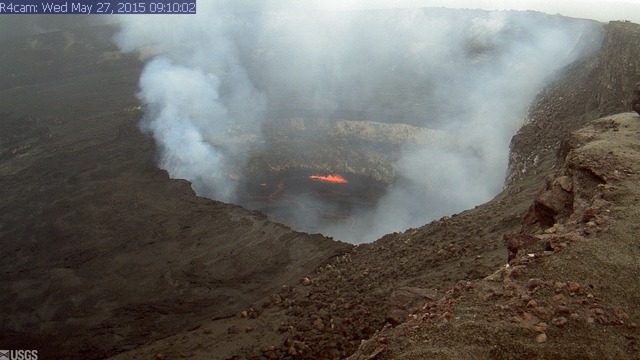Kilauea Volcano’s summit on Thursday continues to show signs of inflation, the U.S. Geological Survey Hawaiian Volcano Observatory reports. ADVERTISING Kilauea Volcano’s summit on Thursday continues to show signs of inflation, the U.S. Geological Survey Hawaiian Volcano Observatory reports. The
Kilauea Volcano’s summit on Thursday continues to show signs of inflation, the U.S. Geological Survey Hawaiian Volcano Observatory reports.
The observatory said its tiltmeters, which are used to measure tiny changes in the slope angle or “tilt” of the ground, at the summit began recording minor inflationary tilt early Wednesday. The change to inflation followed several days of deflation that commenced Sunday evening.
During inflation, magma rises into the summit reservoir, according to the observatory. The summit reservoir enters the deflation portion of the cycle when the magma moves laterally into a rift zone, and either erupts or is stored there.
Scientists said Thursday that seismic rates were at normal background levels at the summit. They added, however, that seismic tremor continues at the summit with episodic bursts associated with spattering within the Overlook vent on the floor of Halemaumau Crater.
Seismicity rates beneath upper East Rift Zone and Southwest Rift Zone have also been at normal, background levels for the past several day.
The tiltmeter on the north flank of Puu Oo continues to show no significant change in tilt as of Thursday morning.
Breakouts along the June 27 lava flow remained active within about 5.3 miles of Puu Oo, scientists said.
The U.S. Geological Survey Hawaiian Volcano Observatory on March 25 downgraded its alert level for Kilauea Volcano from a “warning” to a “watch.”




